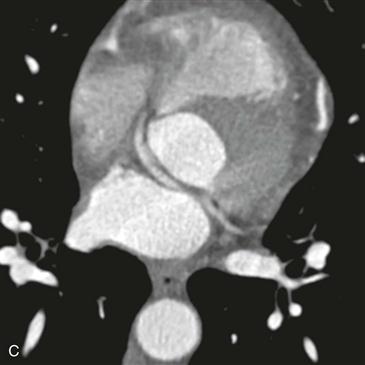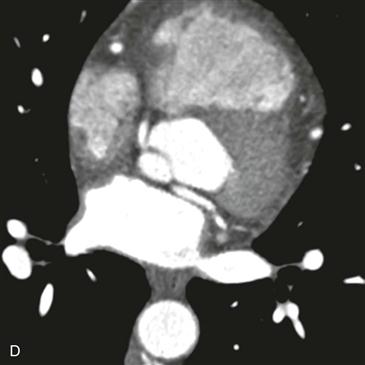CASE 104




1. What are causes of sudden death in young adults? (Choose all that apply.)
C. Hypertrophic cardiomyopathy
D. Arrhythmogenic right ventricular dysplasia
2. The left main coronary artery (not shown) arises from the left sinus of Valsalva. Which coronary artery is anomalous?
A. Left main
D. Right
3. What course does the anomalous vessel take?
A. Prepulmonic
B. Retroaortic
C. Septal
4. What is the usual treatment or next imaging step for the anomaly seen in this patient?
D. Surgery
ANSWERS
CASE 104
Reference
Young PM, Gerber TC, Williamson EE, et al. Cardiac imaging: part 2, normal, variant, and anomalous configurations of the coronary vasculature. AJR Am J Roentgenol. 2011;197(4):816–826.
Cross-Reference
Cardiac Imaging: The REQUISITES, ed 3, pp 225–228.
Comment
Anatomy and Clinical Considerations
Anomalous coronary arteries usually arise directly from the aorta. There are several types of coronary artery anomaly. There are four paths that an anomalous left coronary artery can take to supply its myocardial territory. The retroaortic and interarterial courses are the most common.
Imaging
X-ray coronary angiography can detect a coronary anomaly but often cannot definitively identify the course of the vessel. Electrocardiogram-gated CT (Figs. A–D) is used to map the course of the anomalous vessel. Charting the course of the vessel aids in management.
Radiology Report
The radiology report should address the following:







